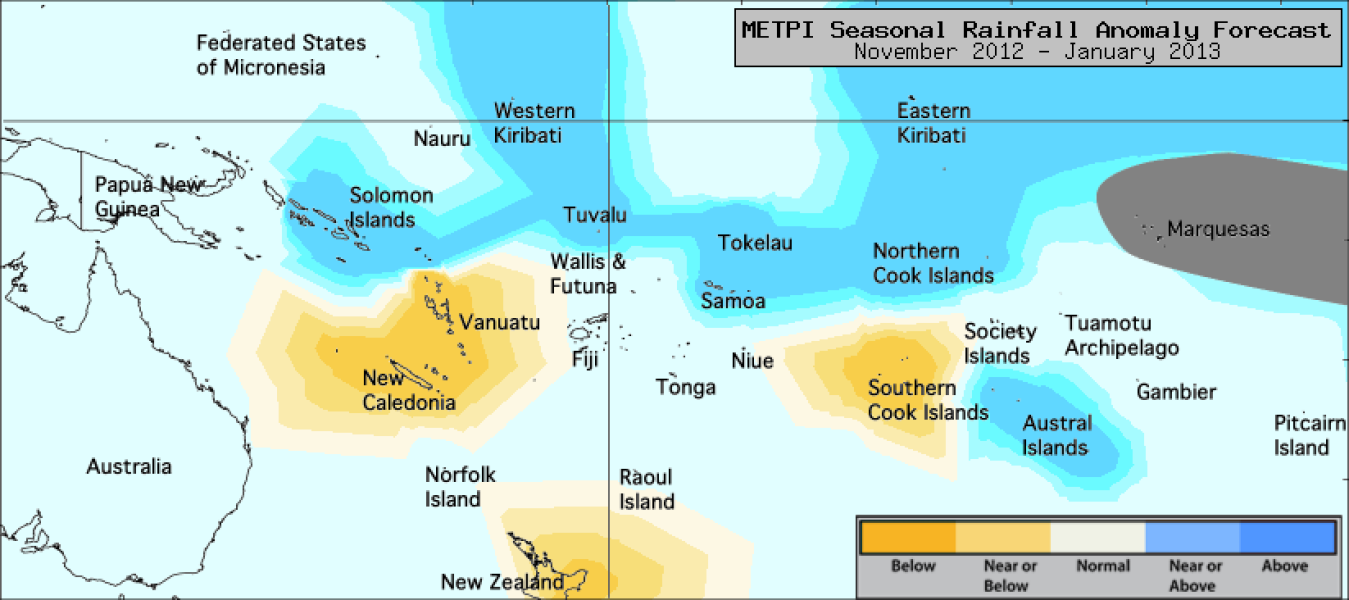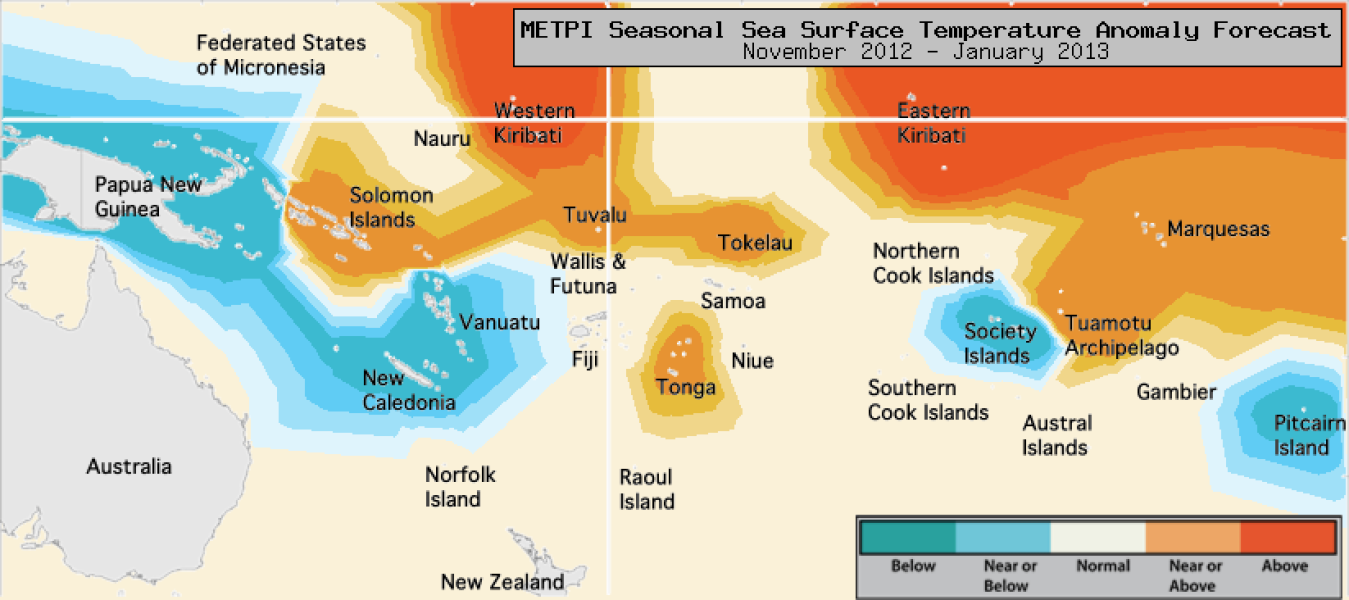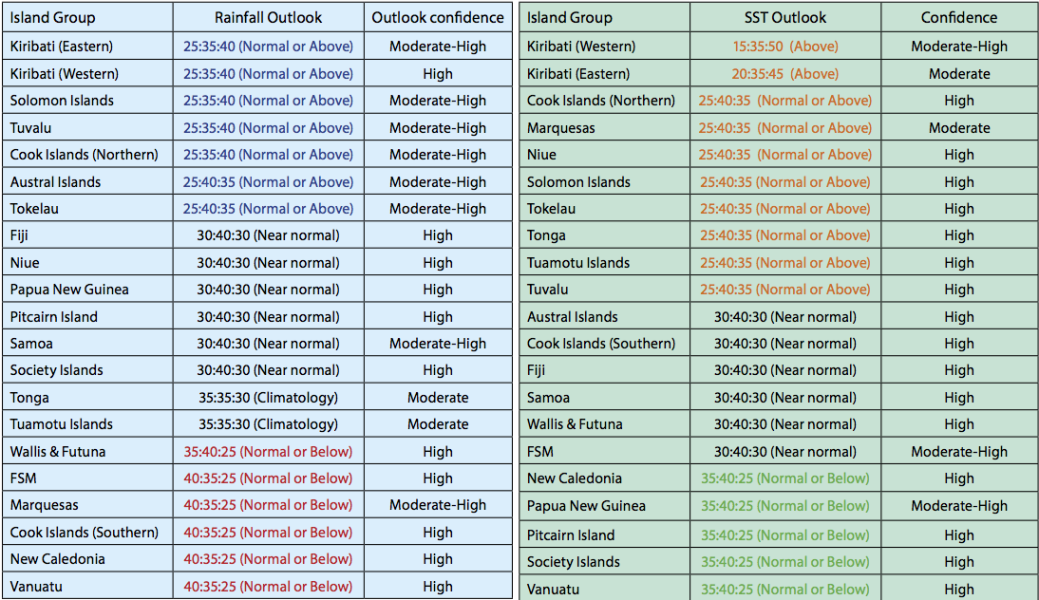The tropical Pacific is close to El Niño thresholds, but the atmosphere is still not showing patterns typical of El Niño.
The dynamical model forecasts for November 2012 – January 2013 show an SPCZ position close to normal over most of the South Pacific and slightly north of its climatological position east of around 160 °W.
Near or above normal rainfall is forecast for the Austral Islands, Eastern and Western Kiribati, the Solomon Islands, Tuvalu, the Northern Cook Island and Tokelau.
Near normal rainfall is expected for Fiji, Niue, Papua New Guinea, Pitcairn Island, Samoa, the Society Islands, Tonga, the Tuamotu Archipelago, Wallis & Futuna, the Federated States of Micronesia.
Normal or below normal rainfall is forecast for the Southern Cook Islands, New Caledonia and Vanuatu. No clear guidance is given for the Marquesas.
The global model ensemble shows some patterns that are similar to a weak El Niño in the sea surface temperature field, particularly near the Equator.
Above normal SSTs are forecast for Eastern Kiribati and Western Kiribati.
Near normal or above normal SSTs are expected for the Solomon Islands, Niue, Tonga, Tuvalu, Tokelau, the Tuamotu Archipelago and the Marquesas.
Normal or below normal SSTs are forecast for Papua New Guinea, New Caledonia, Vanuatu, the Society Islands and Pitcairn Island.
Normal sea surface temperatures are expected elsewhere.
The confidence for the rainfall outlook is moderate to high. The average region–wide hit rate for rainfall forecasts issued in November is 66%, three points higher than the long–term average for all months combined.
The SST forecast confidence is moderate to high across the region, and uncertainty is greatest over the eastern Pacific along the Equator and near the Marquesas.



